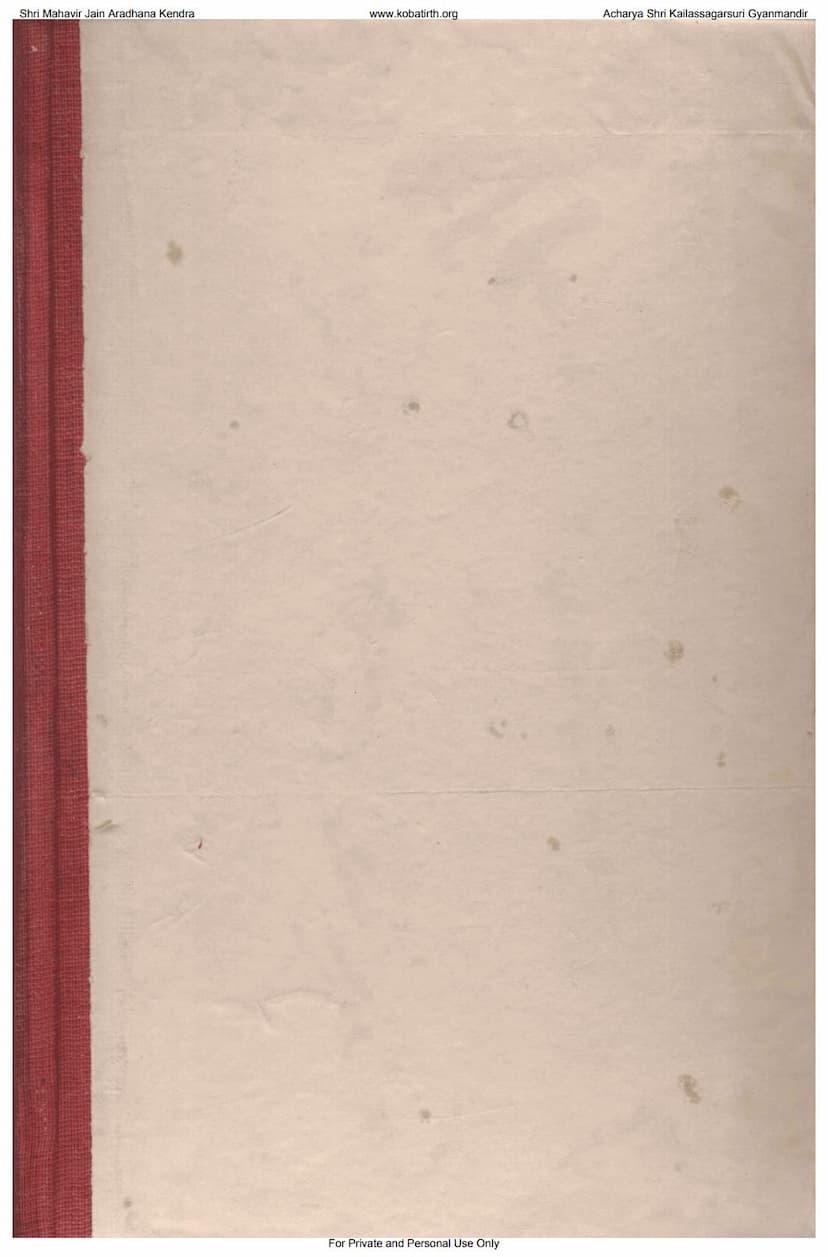Amrutsagar Vaidyak Granth
Added to library: September 1, 2025

Summary
The "Amrutsagar Vaidyak Granth" (Ocean of Nectar: A Treatise on Medicine) is a comprehensive medical text compiled by Sawai Pratapsinh Maharaj, published by Gyansagar Press. This extensive work delves into the principles and practices of Ayurveda, offering a detailed guide to diagnosing and treating a wide array of diseases.
Key Features and Content:
- Authoritative Compilation: Authored by Sawai Pratapsinh Maharaj, the text is presented as a compilation of medical knowledge. The publication details indicate it was printed in Mumbai by Gyansagar Press in Samvat 1917 Shaka (1860 AD).
- Vast Scope: The Granth covers a broad spectrum of medical knowledge, including:
- Diagnosis: Detailed explanations of diagnostic methods such as pulse examination (Nadi Pariksha), urine examination (Mutra Pariksha), patient observation (Rogi Pariksha), and dream interpretation (Sapan Pariksha). It emphasizes the importance of considering factors like season, time, patient's constitution, diet, and the physician's own capabilities.
- Treatment Principles: The text outlines various forms of medicinal preparations and their administration, including Swaras (juices), Kwath (decoctions), Pootpak (pot-cooked preparations), Churna (powders), Kalka (pastes), and Sneha Paka (medicated oils/ghees). It specifies the correct dosages and methods of preparation.
- Disease Classification: Diseases are categorized, with a significant focus on:
- Fever (Jwar): Detailed analysis of different types of fevers (Vata, Pitta, Kapha, Sannipata, Agantuk, etc.), their causes, symptoms, and treatments.
- Digestive Disorders: Extensive coverage of issues related to digestion, including Agnimandya (weak digestion), Amlapitta (acidity), Aamvata (rheumatism), Grahani (malabsorption), and various forms of diarrhea (Atisar) and constipation (Malabandha).
- Other Ailments: The book addresses a multitude of other conditions, such as:
- Skin diseases (Kushtha) with extensive classifications and remedies.
- Eye ailments (Netra Rog).
- Ear ailments (Karna Rog).
- Nasal ailments (Nasika Rog).
- Mouth and throat ailments (Mukha Rog, Gal Rog).
- Ascites (Udara Rog) and its types.
- Urinary tract issues (Mutra Rog), including Urinary Tract Infections (UTI) and stones.
- Hemorrhoids (Varasheel).
- Abscesses and tumors (Granthi, Arbuda).
- Various types of pain (Sool).
- Neurological disorders (Vata Rog), including paralysis (Pakshaghata), stiffness (Akashbadh), and tremors.
- Poisoning (Vish) and its treatment.
- Mental disorders (Unmada).
- And many more.
- Herbal and Material Medica: The Granth details the properties and uses of various herbs and minerals used in Ayurvedic medicine.
- Ethical Considerations for Physicians: The text includes a section on the qualities of an ideal physician (Vaidya Lakshana), emphasizing virtues like knowledge, patience, truthfulness, compassion, and diligence. It also warns against incompetent or unethical practitioners.
- Holistic Approach: The Granth underscores the importance of considering the patient's environment (Desh), season (Kaal), age (Vaya), digestive fire (Agni), and overall constitution (Prakriti) when diagnosing and treating diseases. It also stresses the significance of adhering to proper diet and lifestyle regimens (Pathyapathy).
Significance:
The "Amrutsagar Vaidyak Granth" is a valuable resource for understanding traditional Indian medical practices, particularly Ayurveda, as it was understood and practiced in the 19th century. Its comprehensive nature and the authority of its compiler suggest it was intended as a definitive guide for physicians and a source of accessible health knowledge for the public. The emphasis on detailed descriptions, diagnostic methods, and specific treatments makes it a practical manual. The text also reflects the cultural and societal context of its time, with its emphasis on holistic well-being and the integration of ethical principles in medical practice.